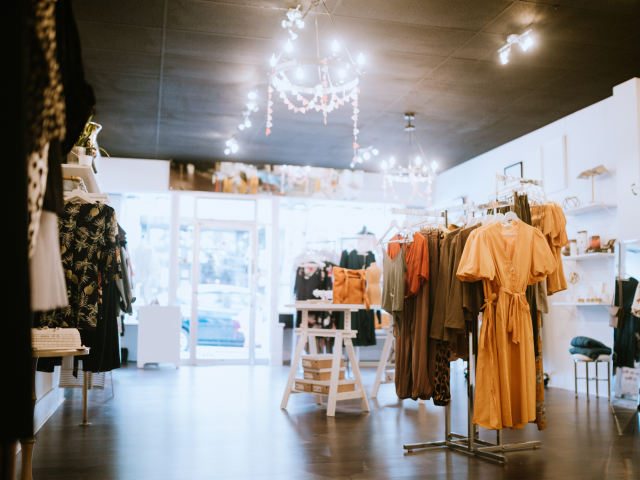CIOs and heads of operations in the retail sector need to track and analyze critical Key Performance Indicators (KPIs) to assess the success of their businesses and continuously improve. A recent survey showed that 81% of retailers and brands actively collect shopper insights, and 76% consider them critical to their performance. There are numerous performance metrics that cover various aspects of a retail operation. However, too often, retailers focus only on the highlight number – sales vs. plan (or LY). While this is undoubtedly a critical metric, it is only a result. It doesn’t tell you HOW a store is performing or WHY their sales are higher or lower than expected. For those answers, you need more targeted KPIs. The four most important KPI categories are based on the customer experience, store productivity, order fulfillment, and employee performance, as follows:
1. Experiential Performance Indicators
The store staff usually doesn’t control what products they have, the prices/offers, or how much traffic walks in. But they CAN control how well they deliver the shopping experience. You can measure this through KPS that monitor experiential metrics, such as:
- Conversion rate of foot traffic coming into the store
- Average transaction value
- Repeat transaction rate
- Rate of returning customers to the store
- Success of the store’s loyalty program (if applicable)
Another good way to measure experiential performance is by asking customers about their shopping experience and whether they would recommend the store to their friends and family. This is known as a store’s Net Promoter Score (NPS). Experiential performance indicators and NPSs can equip retailers with the data to better connect with their customers and improve the shopping experience.
2.Store Productivity Indicators
Retail has always been a tight margin business, and the pandemic made things markedly tighter. So it is vital for every retailer to monitor the underlying productivity of a store. A few shifts in any of these metrics can make the difference between a financially viable store and one that isn’t. Some of the most common store productivity indicators are:
- Customer traffic per square foot
- Customer traffic conversion rate
- Store revenue:
- Per employee
- Per Labor hour
- Per square foot
- Per store
- By season
- Inventory productivity:
- Stock turnover
- Inventory shrinkage
- Profit margins at the store level – gross and net
Monitoring and acting on the store’s operational indicators will help retailers drive more revenue per square foot, remove friction from the customer checkout process and increase profits.
3.Order Fulfillment Indicators
Today’s success in retail requires customers to get what they want, how they want, and as fast as possible. And retailers must make the most of their most significant investment – aka inventory – if they will be financially viable. Modern stores, therefore, are more than just a place for shoppers to find what they want. They also need to be sophisticated fulfillment operations that offer services such as:
- Buy Online and Pickup in Store (BOPIS) Reserve Online and Pickup in Store (ROPIS)
- Ship from Store
- Curbside Pickup
These order fulfillment solutions are an integral part of the retail transformation and need to be measured, analyzed, and improved to ensure optimum omnichannel order fulfillment. KPIs to watch are:
- Order fulfillment rate
- Time to fulfill
- Order completion and abandonment rates
- % and $ upsell per order (when a customer comes to the store for the merch)
4. Employee Performance Indicators
Store staff is the key asset that can distinguish omnichannel retails from their e-commerce, pure-play competitors. And they are also a store’s most significant expense. So it is vital for a retailer to make sure they measure employee performance to reward and retain their top performers. At the same time, employees need to be empowered with the right tools and environment to deliver a seamless customer experience, or else they will switch to retailers who will. To gain insight into an employee’s performance, the following KPIs should be considered:
- Sales per employee at an individual level
- average basket size per employee
- Number of transactions per hour per employee
- Number of customer relationships per employee – their little black book
- Employee outreach to the customer (clienteling), for example:
- How many emails/estimates have the employee sent out to the customer?
- How frequently is the employee calling the customer?
- Employee job satisfaction
- Staff turnover
Employee performance indicators give retailers insight into how stores operate daily, including employee sales metrics, staff efficiency, turnover, and even job satisfaction. The key is to enable retailers to identify staff issues and motivate them to deliver the best modern retail experience.
These are the top four KPI categories that every retail executive should care about. Tulip has developed a four-pillar interrelated product suite that ties these KPIs (and more) together on dashboards to track, analyze and improve performance.
Tulip’s Suite of Products
- Connect enables store associates to connect with customers to deliver better shopping experiences both in-store and online, which drives sales and loyalty.
- Checkout gives retailers the flexibility to transact wherever and however their customers want, making shopping easy and fluid. And it untethers the retailer from their old, inflexible and costly legacy POS systems.
- Fulfill activates a store’s inventory so it can be used to satisfy in-store customers, customers in other stores or online, or customers looking to drive by for a quick pick up.
- Operate uses advanced AI technology to provide retailers with actionable recommendations to improve store performance, optimize schedules and ensure retailers get the most from their labor budgets
Tulip provides the technology tools to dramatically performance for all of these metrics.

